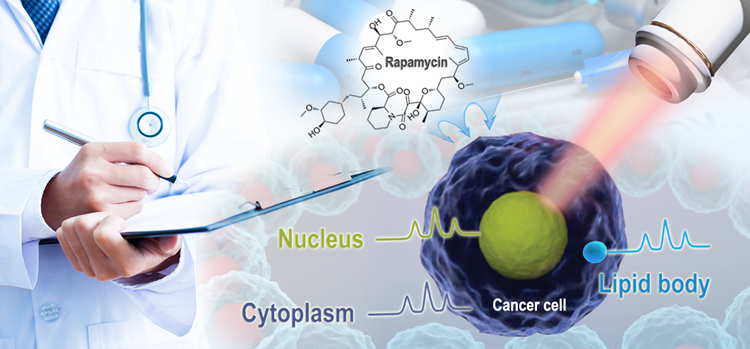
Cancer cells are smart when it comes to anti-cancer drugs, evolving and becoming resistant to even the strongest chemotherapies over time. To combat this evasive behavior, researchers have developed a method named D2O-probed CANcer Susceptibility Test Ramanometry (D2O-CANST-R) to see, at single-cell/organelle level, how pharmaceuticals induce cancer cell death and how cancer cells adapt.
The research, conducted by the Qingdao Institute of Bioenergy and Bioprocess Technology (QIBEBT) of the Chinese Academy of Sciences (CAS), was published on Jan. 12 in Analytical Chemistry, a journal of the American Chemical Society.
"Understanding the mechanism of cellular response to drugs and pharmaceutical therapies is crucial to improving cancer treatment," said paper author XU Jian, director of the Single-Cell Center at QIBEBT. He explained that cancer cells can resist chemotherapy by changing metabolic activity for adaptation to drug stress, but exactly how this happens is poorly understood. "Approaches are needed to rapidly illuminate the particular effects of a drug on metabolic activity of cancer cells. This is clinically important as precise and personal administration of cancer chemotherapy is crucial for saving cancer patients' lives."
Maryam Hekmatara, a PhD student of XU, and her workmates paired a powerful algorithm with Raman spectroscopy, which involves using a laser to excite photons in a sample to reveal structural information, including interactions. They examined how rapamycin, an anti-cancer drug, changed the metabolic activity in a human cancer cell line and in yeast.
Their method revealed the changes small organelles inside the cells made in energy use and consumption. With a resolution capability of less than one micrometer - the width of a human hair is typically 80 to 100 micrometers, for comparison - the approach has the potential to reveal the metabolism in a cancer cell with very fine details.
"The method is able to rapidly and precisely track and distinguish changes in lipid and protein metabolic-inhibitory effect of rapamycin," Hekmatara said, noting the method takes just days compared to traditional tests that can take much longer to see if an individual patient’s cells will respond favorably to a drug. "It is also very precise, as it can distinguish cancer cell responses to drugs at the single cell and single organelle resolution, which is crucial for understanding why the drug is - or is not - effective."
The researchers plan to further study how cells become resistant, as well as further develop their method as a personalized approach to determine the most effective anti-cancer drug for a patient.
Paper co-authors also include Mohammadhadi Heidari Baladehi and JI Yuetong, all of whom are affiliated with the Single-Cell Center at QIBEBT and the University of CAS.

D2O-probed CANcer Susceptibility Test Ramanometry (D2O-CANST-R) (Image by LIU Yang)

86-10-68597521 (day)
86-10-68597289 (night)

52 Sanlihe Rd., Xicheng District,
Beijing, China (100864)

